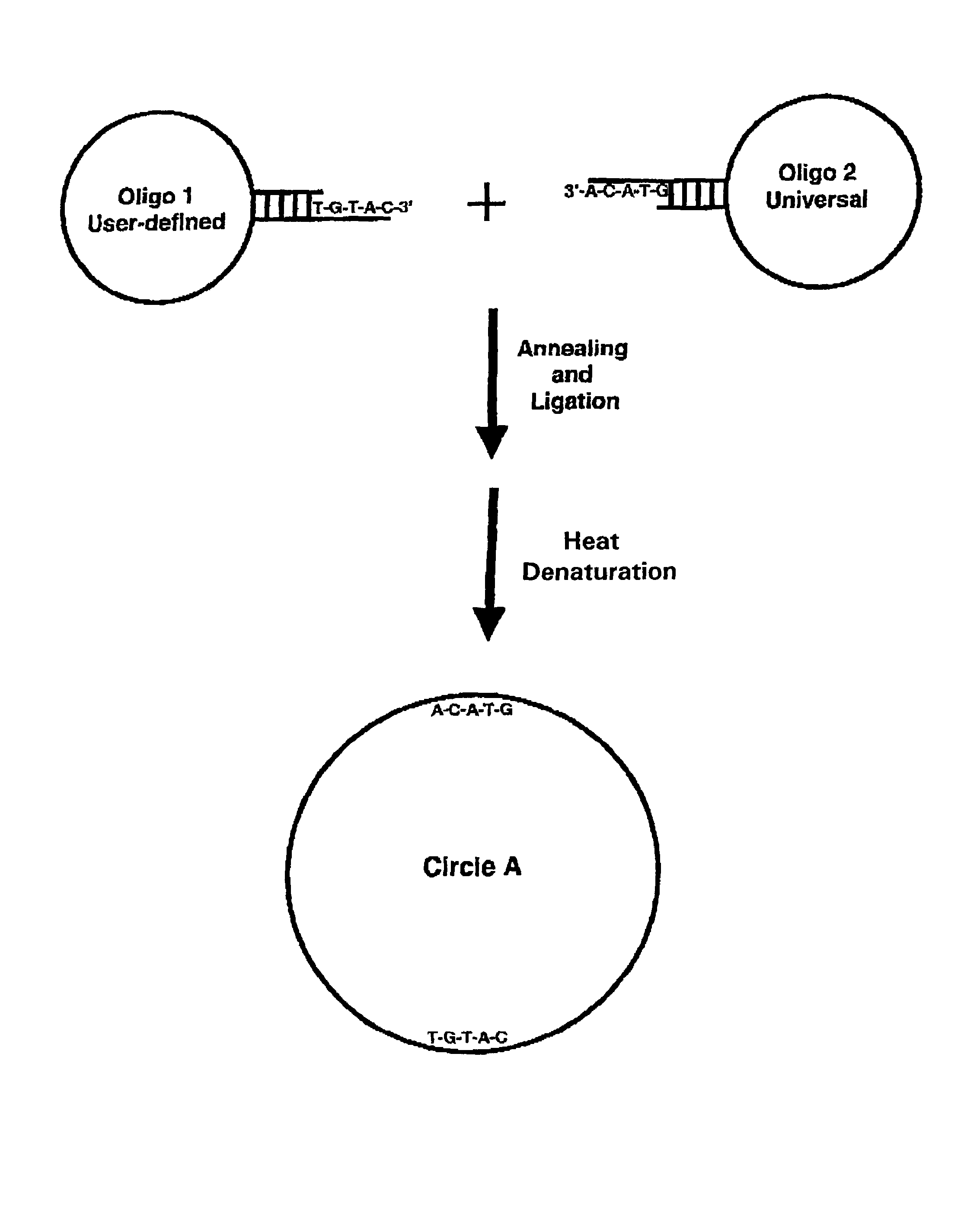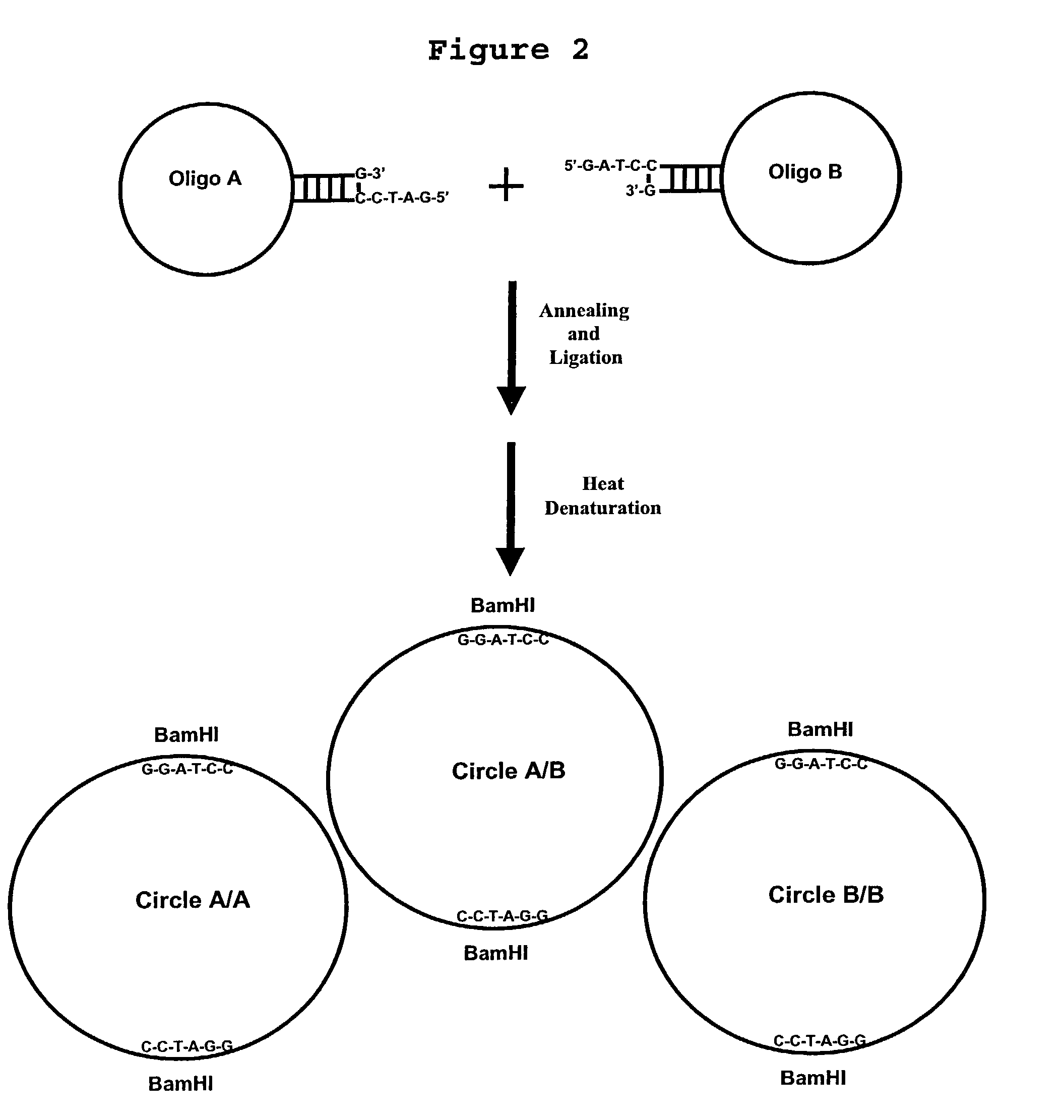Generation of single-strand circular DNA from linear self-annealing segments
a technology of self-annealing and dna, which is applied in the field of single-stranded circular dna generation from single-stranded hairpin segments, can solve the problems of insufficient pcr for rapid and inexpensive production of single-stranded circular dna, the majority of starting circles are synthesized, and the cost is high, so as to achieve the effect of easy ligation to each other and easy replication
- Summary
- Abstract
- Description
- Claims
- Application Information
AI Technical Summary
Benefits of technology
Problems solved by technology
Method used
Image
Examples
example
[0075]
Oligonucleotide 1 (50 n)-5′-TGAGCTGTAACTTGTCTCGTATTAAACTAAAGCTGASEQ ID NO:1GATCTCACGTACAOligonucleotide 2 (45 n)-5′-ACTCAATATAGTTCTTGGAGAAGGTGGAATCACACTSEQ ID NO:2GAGTTGTAC
[0076]Oligonucleotides 1 and 2 were mixed at 5 μM each in a 1 ml reaction mixture containing 50 mM Tris-HCl (pH 7.5), 10 mM MgCl2, 10 mM dithiothreitol (DTT), 1 mM adenosine triphosphate (ATP) and 25 μg / ml bovine serum albumin (BSA). The mixture was heated to 65° C. for 5 minutes and allowed to cool at room temperature (24° C.) for 30 minutes. Ligation was initiated by adding T4 DNA ligase to a final concentration of 2,000 ligation units per ml (approximately 30 Weiss units). The ligation mixture was incubated in a water bath for 2 hours at 37° C. Ligation products were analyzed and quantitated by denaturing polyacrylamide gel electrophoresis.
[0077]To purify circles, 2,000 units of Exonuclease III were added to reaction mixture and incubation continued for 2 hours at 37° C. The mixture was then heated at 95°...
PUM
| Property | Measurement | Unit |
|---|---|---|
| Temperature | aaaaa | aaaaa |
| Temperature | aaaaa | aaaaa |
| Temperature | aaaaa | aaaaa |
Abstract
Description
Claims
Application Information
 Login to View More
Login to View More - R&D
- Intellectual Property
- Life Sciences
- Materials
- Tech Scout
- Unparalleled Data Quality
- Higher Quality Content
- 60% Fewer Hallucinations
Browse by: Latest US Patents, China's latest patents, Technical Efficacy Thesaurus, Application Domain, Technology Topic, Popular Technical Reports.
© 2025 PatSnap. All rights reserved.Legal|Privacy policy|Modern Slavery Act Transparency Statement|Sitemap|About US| Contact US: help@patsnap.com



